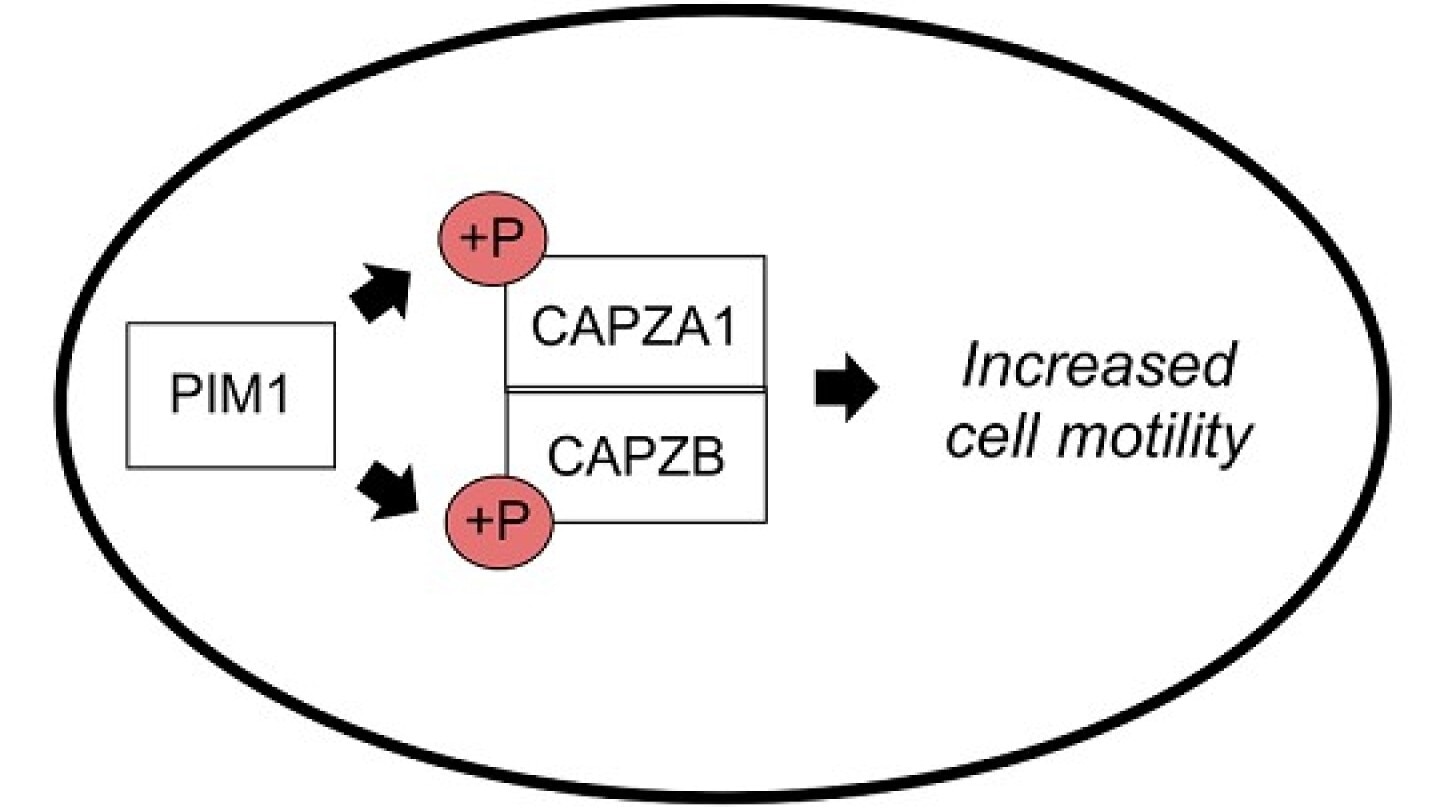PIM kinases are essentially enzymes that support the metastatic growth and proliferation of tumor cells.

Graphic abstract of the study results. Image Credit: Päivi Koskinen, University of Turku.
Scientists, from the University of Turku based in Finland, have now acquired new data on how these PIM kinases improve the motility of cancer cells by controlling the development of actin fiber in the cytoskeleton.
The results, published in the Cell Communication and Signaling Journal, support the development of PIM-targeted treatments to inhibit metastasis formation in cancer patients.
The survival of cancer patients is very crucial, whether the cancer cells continue to stay in their primary site or start moving around the body to create metastases into various vital organs, including bones. To inhibit metastasis formation, more data is required about the factors that control the motility of cancer cells.
We had previously observed that PIM kinases promote and PIM-inhibitory compounds reduce migration of prostate cancer cells, but now we found a new mechanism to explain these observations.”
Dr Päivi Koskinen, Team Lead, Department of Biology, University of Turku
The movements of cells are motorized by the actin fibers in the cytoskeleton that are continuously depolymerized or polymerized unless they are capped by proteins that guard the fiber ends.
We demonstrated that via phosphorylation, PIM kinases modify actin capping proteins so that they cannot bind to actin polymers. As a consequence, actin processing as well as cell motility are enhanced, describes. By contrast, in the presence of PIM inhibitors, cells stuck to each other and did not move much.”
Niina Santio, PhD, University of Turku
Santio was mainly responsible for the experimental study.
Video abstract visualizes the results
The findings offer a better understanding of the pro-metastatic impacts of the anti-metastatic PIM inhibitors as well as PIM kinases.
Apart from graphic and written abstracts, the researchers also used a video abstract o submit their data, for the first time.
A visual abstract is a nice way to summarize the main message of the research into a single figure. Now, we also had the opportunity to wrap up our results into a short informative video which was finalised by an expert team provided by the journal.”
Dr Päivi Koskinen, Study Lead, Department of Biology, University of Turku
PIM1 accelerates prostate cancer cell motility by phosphorylating actin capping proteins
Video Credit: University of Turku
Source:
Journal reference:
Santio, N. M., et al. (2020) PIM1 accelerates prostate cancer cell motility by phosphorylating actin capping proteins. Cell Communication and Signaling. doi.org/10.1186/s12964-020-00618-6.